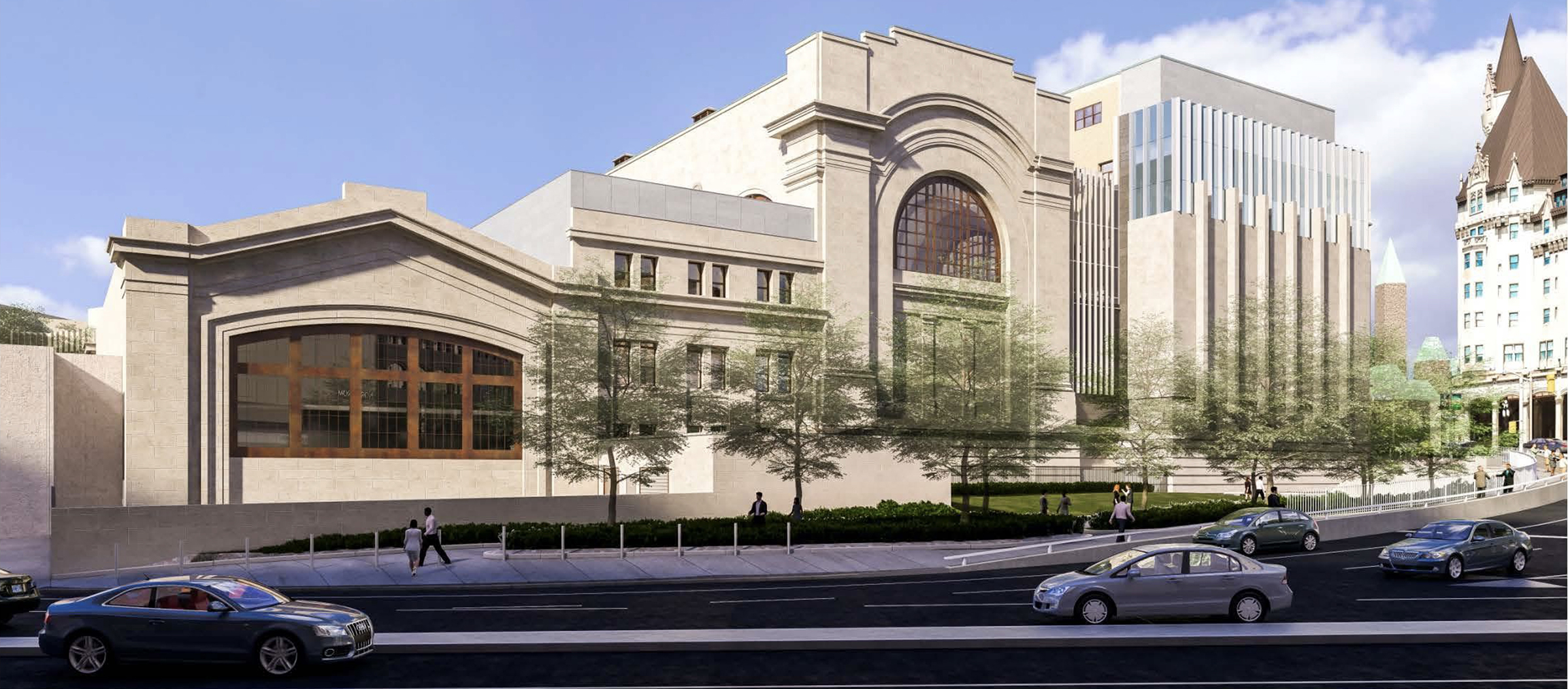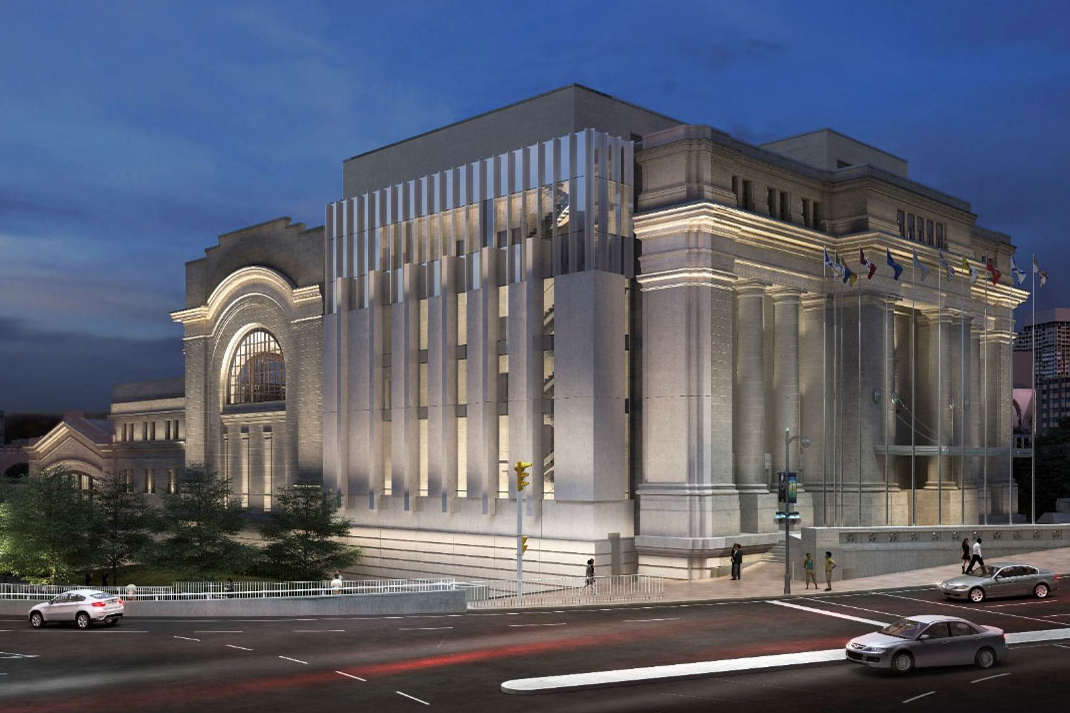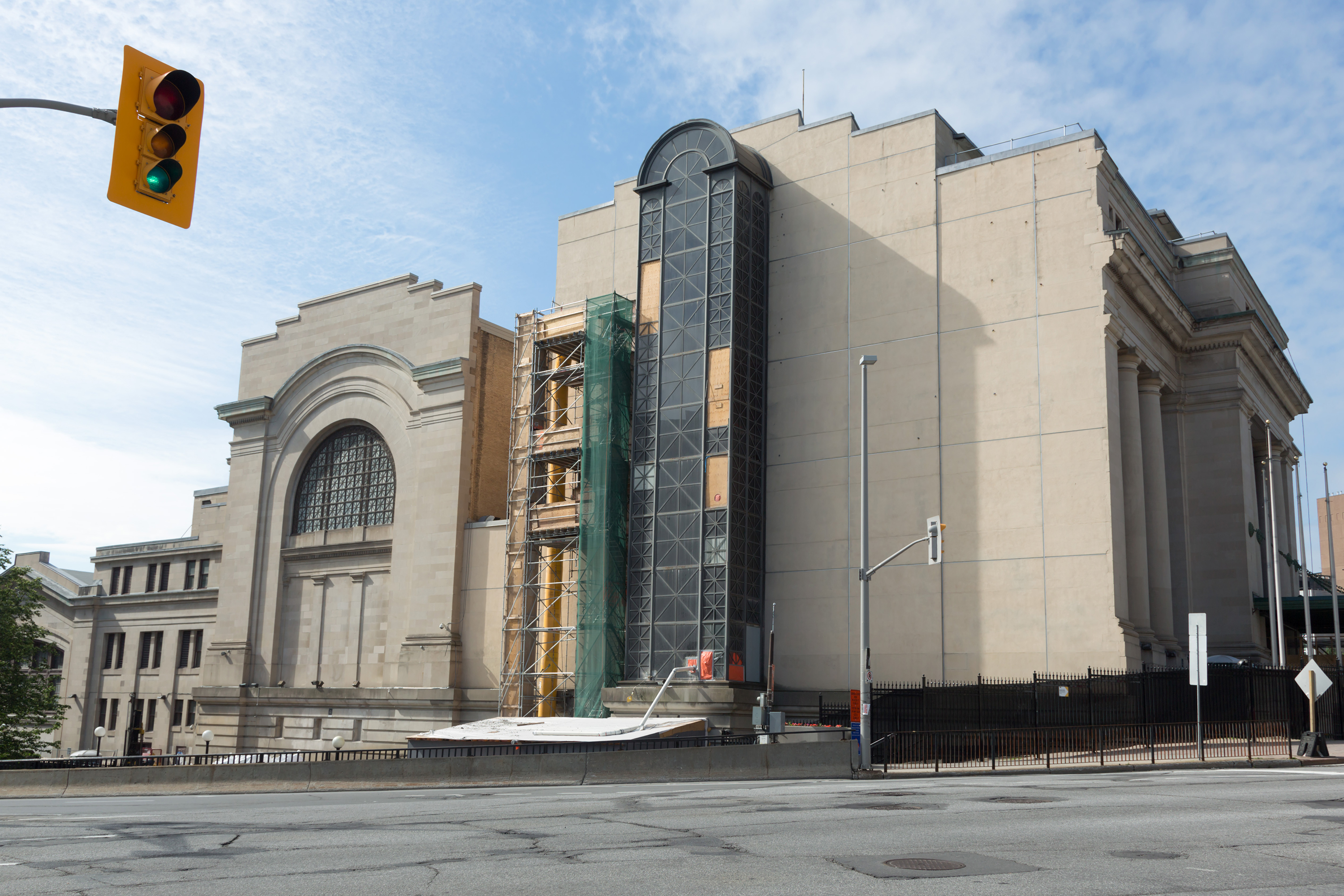The Government Conference Centre’s new facade fuses classic and contemporary architecture

This article is part of a series about the Senate of Canada’s move to the Senate of Canada Building, formerly known as the Government Conference Centre. In 2018, the Senate began to move into the building, a former train station built in 1912, while Parliament’s Centre Block — the Senate’s permanent home — is rehabilitated. The Senate will begin operating from the Senate of Canada Building in early 2019.
The savings to taxpayers will be approximately $200 million compared to the original proposal to find an alternative location on Parliament Hill. The Senate is expected to occupy its temporary location for at least 10 years.
The most striking feature of the revitalized Government Conference Centre — Ottawa’s former central train station and the future temporary home of Canada’s Senate — is arguably its new east facade, a soaring colonnade of Indiana limestone pillars and shimmering glass panels.
It replaces an exposed masonry wall — a bare expanse of concrete and stucco that had stood at the corner of Rideau Street and Colonel By Drive for over half a century and bore the ghostly outline of a onetime Ottawa landmark.
“Built against the side of the Corry building, the east elevation was never intended to be exposed and was really an incomplete facade, revealed only when the neighbouring building was demolished,” said Martin Davidson, a principal with Toronto’s Diamond Schmitt Architects which, along with Ottawa’s KWC Architects, is overseeing the project’s design.
When it opened in 1912 as Grand Trunk Railway’s Ottawa terminus, the station abutted the Corry Block, a wedge-shaped brownstone that housed shops, warehouses and a hotel through the years. Built nine years before the station, the Corry Block was one of the first buildings in Ottawa constructed on a steel frame and, at seven storeys, one of its first skyscrapers.
Grand Trunk had initially hoped to buy and demolish the Corry Block but, as the asking price soared, the railway company opted instead to accommodate the adjacent flatiron building into its design for the new station.
The east side of the station was never intended to be as grand as the rest of the building. It housed baggage rooms, loading bays and a steam plant and looked out over a freight yard. There, a tangle of tracks and warehouses lay where the Rideau Centre, the Westin hotel and the Shaw Centre now stand.
In 1966, the National Capital Commission, as part of a comprehensive plan to beautify the capital, decommissioned the station and began pulling up the rail bed along the Rideau Canal. The Corry Block was demolished to make way for an onramp connecting the newly opened Colonel By Drive to Rideau Street. This left the station’s east wall exposed.
The building sat empty for several years before reopening as the Government Conference Centre, in time to host the 1973 Commonwealth Heads of Government Meeting. The building was hurriedly retrofitted for the occasion and the exposed east facade was coated with stucco. In 1984, it was fitted with a steel- and glass-covered stairwell.
The makeshift facade was functional but neither particularly beautiful nor consistent with the building’s Beaux Arts design.
Now, a graceful six-storey addition is taking shape on the building’s northeast corner. It will incorporate an elevator and a stairwell with commanding views to the east. A single-storey extension to the south will house a loading dock.
“The new facade uses the cues of the existing building in terms of its proportion and symmetry,” Davidson said. “It’s consistent with the original Beaux Arts design but, at the same time, it’s also a modernist take on the original.”





